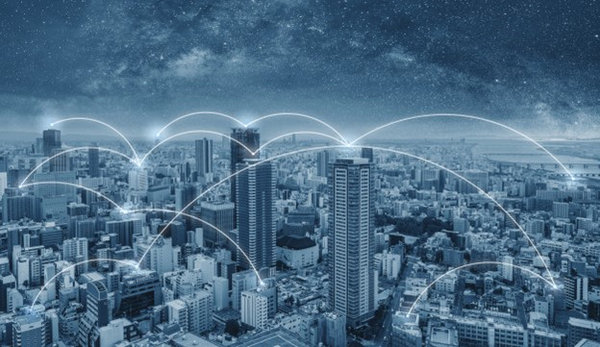Mandaluyong, Philippines [January 20, 2020] – Smart Cities are fast becoming one of the world’s most critical industries as more countries invest in technologies to improve the delivery of government service.

In its simplest essence, a smart city is all about providing people a better quality of life by using different types of electronic methods and sensors to collect data. The insights gained from that data are utilized to manage assets, resources, and even services efficiently, helping governments to improve their operations across the city. It also enables e-governance or the integration of Information and Communication Technology (ICT) in all the processes to enhance the government’s ability to address the needs of the public.
By 2025, smart city development worldwide is estimated to create business opportunities worth $2.46 trillion, as revealed by a report released by tech research firm Frost and Sullivan. This trend is driven by the uncertainties of the post-pandemic work, which will compel cities to focus more on developing collaborative, data-driven infrastructure to provide healthcare and public security, as well as resilience to natural disasters.
Laying the Groundwork
In the Philippines, the national government has been pushing the adoption of smart city technologies. For instance, the Department of Information and Communications Technology (DICT), being the country’s primary agency promoting the adoption of eGovernment Services (ICT-ES), has developed the E-Government Masterplan (EGMP) 2022.
This plan outlines DICT’s intent of developing the country’s e-government systems through the digital transformation of services, such as public health, education, and other programs that cut across the whole of government. By doing so, DICT aims to create a networked and collaborative environment for improved public service delivery.
Additionally, as the ongoing pandemic accelerates innovation, some local governments have laid their plans for their smart city initiatives, especially on e-governance. Baguio City, for instance, has recently announced its investments to transform into e-government using Information and Communication Technologies (ICTs) and other web-based telecommunication technologies, such as crowd density monitoring and real-time weather prediction, to improve the delivery of public service.
Aside from Baguio, the New Clark City in Pampanga, Davao, Cebu, and Manila have also previously laid the groundwork to make their areas smarter through the adoption of e-governance technologies.
The need for the adoption
For Vertiv, a global provider of critical digital infrastructure and continuity solutions, the digital transformation and e-governance initiatives of all the cities in the country, just like the other smart cities across the globe, provide an opportunity to make the entire Philippines more resilient challenges like the current public health crisis or natural calamities.
Last year, the country was identified as one of the most vulnerable to climate change by the Global Peace Index of the Institute of Economics and Peace (IEP) due to its high exposure to natural hazards, such as typhoons, landslides, floods, and droughts, as well as its heavy reliance to its climate-sensitive natural resources.
The Philippine Atmospheric Geophysical and Astronomical Services Administration (PAG-ASA) also noted that more tropical cyclones are entering the Philippine Area of Responsibility (PAR) than anywhere else in the world. Recently, the Philippines experienced five typhoons in a row—Quinta, Rolly, Siony, Tonyo, and Ulysses—which all made landfall in the country within at least a month. All these typhoons left trails of devastation, which include physical injuries, casualties, and damages to agriculture and other properties.
“Following this devastation, preparedness for typhoons and other calamities has never been more important, for instance, in getting necessary data where they can draw insights to efficiently conduct pre-evacuation of residents in flood-prone and vulnerable areas. And as IT becomes integral, government agencies must have a ready infrastructure in place to ensure that services go on unhampered and citizens have access to services they need,” said Jason Lim, country manager of Vertiv Philippines.
Tackling Infra Challenges
As technology adoption of big data, cloud computing, and the Internet of Things (IoT) matures, Lim said that governments are now turning to Artificial Intelligence (AI) and analytics in their technology initiatives. These trends will enable the no-collar workforce or the increased use of cognitive assets, bots, and other technologies to support the existing workforce. Instead of replacing people, technology will augment the existing labor force in the drive to become a sustainable, hyperconnected society.
Meanwhile, the increasing reliance on IT will turn the spotlight on ensuring the integrity and security of personal data being collected by different government agencies. Investments in hardware and software protection against cybercrimes will become a priority. That is why it is integral for governments to rethink their strategy to include data sovereignty and protection as part of their e-governance initiatives.
“The IT infrastructure should be designed not only to support critical operations, but it must also have robust monitoring and management framework for secure operations, intelligent notifications, and alerts to enable immediate action in case of emergencies,” added Lim.
Governments also need a strong IT backbone that provides agility, productivity, and efficiency to government operations. This consolidation simplifies government operations through cross-agency platforms, eliminating operational redundancies. A robust data center is also needed to support the increasing use of online applications to connect citizens and businesses.
To help local governments in tackling these IT infrastructure challenges, Vertiv brings together cutting-edge E-Governance Solutions to ensure uninterrupted operations, optimal performance, and scalability of data centers, communication networks, and other critical IT facilities needed in creating smarter and more resilient cities.
To learn more about how Vertiv supports the continuity of today’s vital business and government applications, visit Vertiv.com.
